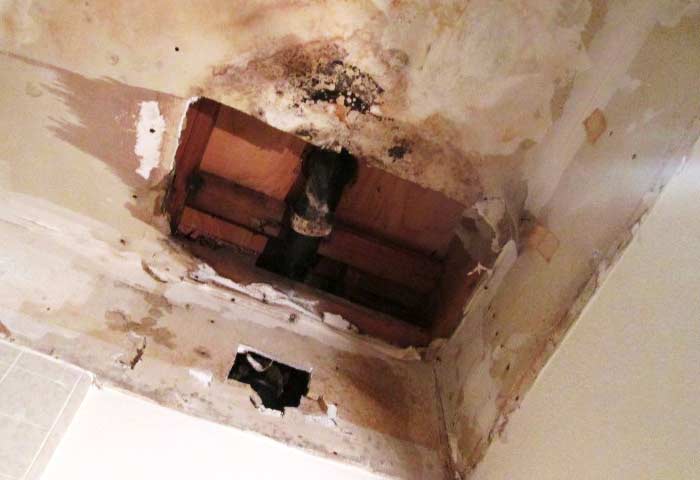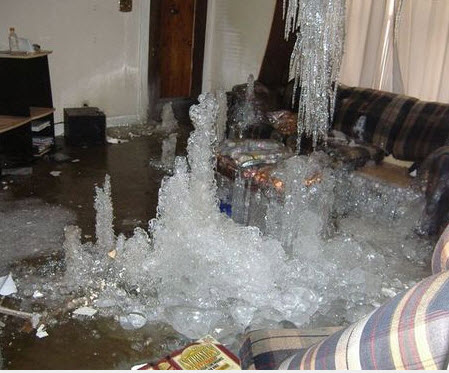Stop the Flood: Techniques for Detecting as well as Repairing Burst Pipes
Stop the Flood: Techniques for Detecting as well as Repairing Burst Pipes
Blog Article
What are your thoughts about What to Know Before Installing a Dishwasher?

A ruptured pipeline is a major emergency; you can only stand as you view water you pay very much to reunite with the planet. In even worse instances, you see a swimming pool on your kitchen floor, which is a fantastic trip hazard, especially if you have kids around. If the pipe that burst remained in your wall surfaces, trouble: you might require to paint that whole area.
Just how can a tragedy like a ruptured pipeline be protected against and also taken care of? Well, by paying attention to your specialist emergency plumbing professionals and also following these rules.
How do I recognize when my pipelines have ruptured?
Rising and fall water stress
Pipelines do not simply burst in a day. You may have discovered that your kitchen area tap or shower does not run quickly when you transform the tap. It may pause for a few seconds and afterwards blast you with even more pressure than normal.
In other instances, the water may appear regular initially, then drop in pressure after a couple of secs.
Polluted water
Lots of people assume a ruptured pipeline is a one-way electrical outlet. Rather the contrary. As water flows out of the hole or gash in your plumbing system, impurities locate their method.
Your water may be contaminated from the source, so if you can, check if your water container has any type of issues. However, if your alcohol consumption water is provided as well as purified by the local government, you must call your plumber right away if you see or smell anything amusing in your water.
Puddles under pipelines and sinks
When a pipeline ruptureds, the outflow forms a pool. It may show up that the pool is growing in dimension, as well as no matter the amount of times you wipe the puddle, in a couple of mins, there's another one waiting to be cleansed. Typically, you may not have the ability to trace the puddle to any kind of visible pipelines. This is an indication to call a professional plumber.
Damp walls and also water spots
Before a pipeline bursts, it will certainly leak, most times. If this consistent leaking goes undetected, the leak might graduate right into a broad gash in your pipeline. One easy means to avoid this emergency is to keep an eye out for wet wall surfaces ad water discolorations. These water stains will certainly lead you right to the leak.
Untraceable trickling noises
Pipeline bursts can take place in the most undesirable places, like within concrete, inside wall surfaces, or under sinks. When the house goes quiet, you might be able to listen to an irritatingly consistent dripping sound. Also after you've examined your shower head and kitchen area tap, the leaking might continue.
Precious reader, the leaking might be coming from a pipeline inside your wall surfaces. There isn't much you can do regarding that, other than tell a professional plumber.
Show up the Heat
Establish followers to blow heat right into cool rooms. Maintain the garage door closed. If you have lowered water circulation, warm the most at risk pipes (normally in cellars and crawl spaces or near outside wall surfaces) with a hair dryer. Leave the faucet on while you use heat. As you melt ice, the circulation will certainly increase. To avoid pipelines from freezing, insulate your wall surfaces.
Beginning Getting Rid of the Water
Get the wipe, containers and also a shop vacuum to begin to remove the water because you definitely do not desire it saturating into whatever else in your home. And also, a fast clean up will decrease the possibilities of something obtaining musty.
What do I do when I spot a burst pipeline?
Your water meter will certainly remain to run even while your water wastes. To reduce your losses, discover the primary controls and turn the supply off. The water pipe are an above-ground framework beside your residential or commercial property.
How to Fix & Detect a Leaking Pipe
How Do I Know if a Pipe is Leaking?
Leak detection tests can help you determine if your pipe has a leak. Even if you don’t see an apparent leak, you should still conduct leak detection tests regularly to save water and money—and prevent major damage to your home.
Water meter. It can be helpful to figure out what your usual water meter usage numbers are and then monitor them regularly. To monitor your meter, first, turn off all water faucets in your home. Check the meter and write down the numbers. In a few hours, check the meter again. If the numbers have changed, you have a leak. Water gauge. Use a water gauge to test your water pressure. Your showerhead should produce a certain amount of water pressure based on its model and design. If the pressure is lower than it is supposed to be for that specific showerhead, your home likely has a leak. Puddles. Look inside your bathroom, laundry, and kitchen sink cabinets. Puddles around the cabinets or around toilets, tubs, showers, and washing machines indicate the presence of a leaking pipe. You may also notice loose tiles, peeling or flaking paint, or mold caused by water accumulation. Napkin test. Even if you don’t see any puddles, you may still have a leak. You can test for water leaks in the bathroom, laundry, and kitchen by wiping below-sink connections with a napkin, paper towel, or piece of toilet paper. If it becomes damp, you probably have a leaking pipe under the sink. Discolored walls. Walls that are discolored—usually with brown or yellow stains—or bulging might mean that they have been impacted by water damage caused by a leaking pipe. Smell. A leaky pipe will create sitting water, and over time, that water may develop a musty smell. If your home smells musty, but you can’t locate the source, it may be due to a leak. Steps for Fixing a Leaking Pipe
A leaky drain can be remedied by tightening the pipe base, replacing the drain seal, caulking the rim, and tightening the pipe nut. Similarly, a leaking toilet pipe can be treated by tightening the packing nut. You may also need to replace the valve. A leaky faucet may just need tightening or replacement of the washers. If that doesn’t work, consider replacing your faucet. If your pipe has a hole in it, you may want to use a pipe leak sealer or pipe leak tape. This quick fix for water pipe leaks can also temporarily fix a copper pipe leak. https://www.ahs.com/home-matters/quick-tips/how-to-tell-if-pipes-are-leaking/

I am very interested in How to Install and Connect a New Dishwasher and I hope you appreciated the entry. For those who enjoyed reading our blog posting please don't forget to share it. We value reading our article about How to Prepare for Your Dishwasher Installation.
Get A Quote
Report this page